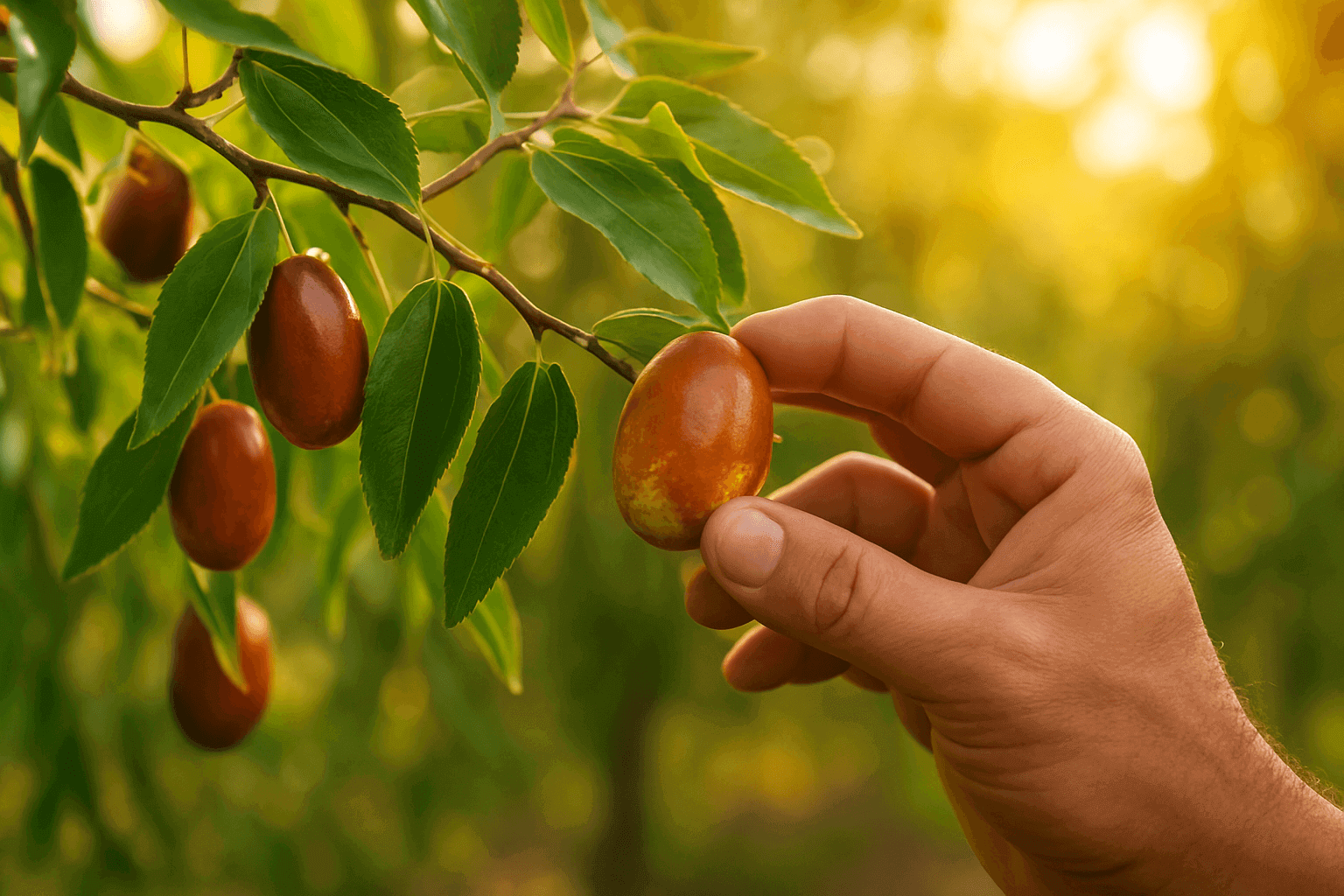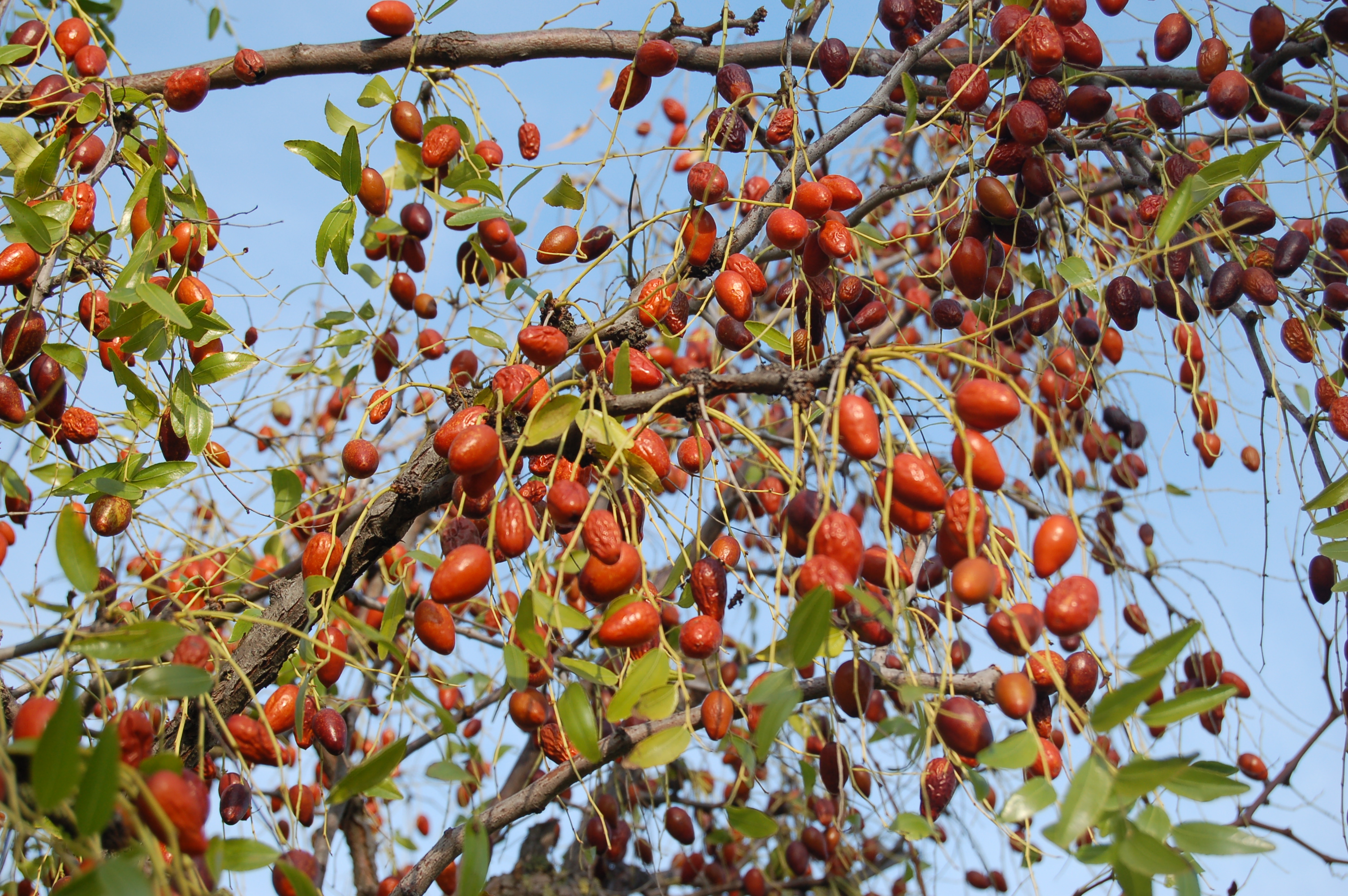
🌟 Hinap at Home: The Complete Guide to This Unbeatable Plant
The most commonly asked question about growing Hinap is: "Is there a plant that's easy to grow, requires almost no effort, and gives you incredible fruit?" The answer is absolutely yes! Growing Hinap at home is surprisingly rewarding when you plant it in a sunny spot with well-drained soil. Whether you're a beginner gardener or an experienced green thumb, this incredibly resilient plant can thrive in your backyard, providing you with delicious, nutrient-rich fruit year after year, no matter if you're battling a hot, dry summer or a chilly European winter.
🌍 The Fascinating Journey of Hinap: From Ancient Wisdom to Your Garden
Before we dive into the gardening details, let's appreciate the remarkable story of this unsung hero. Originally native to Asia, Hinap (Ziziphus jujuba), also known as the Jujube tree or Chinese date, has a rich history spanning over 3,000 years, cherished for its medicinal properties and versatility. Its name isn't as well-known in the West, but its nature is anything but demanding. What makes the Hinap plant truly special for home gardeners isn't just its ancient appeal. This vigorous, hardy tree or shrub can transform any garden space into a productive haven while yielding incredibly nutritious fruit. The Hinap fruit, which resembles a small olive, is a true chameleon, starting green and ripening to a deep, mahogany red with a crisp, apple-like texture when fresh.
(🌸 Looking to expand your garden knowledge? Check out our comprehensive Types of Flowers Guide by clicking here!👈 to learn about companion planting with flowering plants that can significantly improve your harvest!)
💪 Hinap's Nutritional Powerhouse: The Health Benefits That Will Blow Your Mind
![]()
Hinap isn't just a pretty face in the garden; it's a nutritional powerhouse. For centuries, it has been a cornerstone of traditional Chinese medicine, valued for its ability to promote health and well-being. Modern science is now catching up and confirming what ancient wisdom has known for generations. Here's why this plant deserves a spot in your garden in 2025:
-
A Natural Sleep Aid: Do you struggle with insomnia or restless nights? The Jujube fruit has been traditionally used to calm the mind and nerves, and modern research suggests its antioxidant properties may be the reason.
-
Digestive Dynamo: Packed with dietary fiber, Hinap is a fantastic ally for your digestive system. A high-fiber diet is crucial for preventing constipation, promoting a healthy gut microbiome, and keeping you feeling full longer.
-
Immunity Booster: With a high concentration of Vitamin C, Hinap is like a natural flu shot in a fruit. Eating just a few of these small fruits can provide a significant portion of your daily recommended intake.
-
Antioxidant Abundance: Hinap fruits are loaded with beneficial compounds that help fight free radicals in your body, which are linked to cell damage and aging. Think of it as an anti-aging secret straight from your garden!
-
Supports Mental Health: The Hinap fruit is rich in amino acids, including tryptophan, which is a precursor to serotonin—the "feel-good" hormone. This is why it has been used for centuries to support mental well-being and combat anxiety.
Imagine stepping into your garden in the summer of 2025 and picking a handful of these vibrant red fruits. You're not just getting a tasty snack; you're harvesting a plant with ancient healing properties that can boost your energy, improve your sleep, and keep you healthy all year round.
🌱 Setting the Stage: Soil, Sun, and Space Requirements for Hinap

Creating the perfect environment for your Hinap plant starts with understanding its specific needs, which are far less particular than many other fruit crops. Think of Hinap as the low-maintenance performer of the fruit world – it needs minimal conditions to deliver a show-stopping performance. Hinap thrives in well-drained soil in full sun locations that receive at least 6-8 hours of direct sunlight daily. The emphasis on "well-drained" cannot be overstated – these resilient trees are highly sensitive to waterlogged conditions. They can tolerate chalky, sandy, and even poor-quality soil, making them perfect for many types of landscapes in the USA, UK, and EU. Space planning is critical for Hinap success. These hardy trees can easily reach 15-20 feet in length and need sturdy support structures in windy areas. Unlike many fruit trees that grow upward, Hinap can be trained to grow as a small tree or a large bush, making it suitable for both spacious countryside gardens and smaller urban gardening spaces.
🌿 Planting Your Hinap Tree: Timing and Technique

Spring or late autumn planting gives your Hinap tree the entire season to establish before facing extreme weather. The timing should coincide with soil temperatures being workable. When planting, dig a hole twice as wide as the root ball but no deeper than the container. Hinap roots prefer to spread horizontally rather than growing deeply, so a wide, shallow planting hole encourages proper root development. The crown of the plant should sit at the same level it was growing in its nursery container – planting too deep can cause problems. Spacing is crucial for healthy growth and disease prevention. Plant Hinap trees 15-20 feet apart to ensure adequate air circulation and prevent overcrowding. Proper spacing also makes harvesting easier and reduces competition for nutrients and water. After planting, water thoroughly and apply a 2-3 inch layer of organic mulch around the base, keeping it away from the stem. This mulch helps retain moisture, suppress weeds, and gradually improves soil quality as it decomposes.
(🌱 Curious about other easy-to-grow plants? Click here:👉Our detailed guide on How to Grow Kiwi Fruit at Home can help you plan your entire exotic fruit garden timeline!)
💧 Watering Wisdom: Mastering Hinap Hydration

Hinap trees have specific water requirements that are surprisingly minimal. Understanding these needs is essential for healthy growth and optimal fruit production. Newly planted trees require regular watering for the first 6-8 weeks while their root systems establish. Water deeply but less frequently, encouraging roots to grow down rather than staying shallow. A good rule of thumb is to water when the top inch of soil feels dry to the touch. Once established, Hinap trees are exceptionally drought-tolerant and produce well with minimal supplemental watering. Overwatering is a common mistake and can lead to root rot. The best watering method is drip irrigation or a soaker hose, which delivers water directly to the root zone without wetting the foliage, reducing disease risk.
🔪 Pruning for Success: Shaping Your Resilient Hinap Tree

Even a low-maintenance plant like Hinap benefits from a bit of attention. Pruning is key to shaping your tree and ensuring a healthy, productive life.
-
When to Prune: The best time to prune is in late winter or early spring while the tree is still dormant.
-
What to Prune: Remove any dead, diseased, or crossing branches. You can also thin the canopy to improve air circulation and sunlight penetration, which helps with fruit production.
-
Why Prune: Pruning not only improves the tree's health but also makes harvesting easier and manages its size for smaller gardens.
(🌿 Speaking of essential gardening tools, discover the amazing Health Benefits of Pistachios here!👈 And how they complement a healthy garden-to-table lifestyle alongside your homegrown Hinap!)
❓ Common Questions from Gardeners Across Europe and the USA
-
"Will a Hinap tree survive a cold winter in Bulgaria or the UK?" Yes! Ziziphus jujuba is surprisingly cold-hardy. Many varieties are hardy down to USDA Zone 6, which covers a large part of the UK, USA, and EU, including most of Bulgaria. It's a resilient plant that can handle frost and even snow.
-
"When can I expect my first harvest?" A young Hinap tree can start producing fruit as early as its first or second year after planting. However, the plant will truly hit its stride and provide a significant harvest around its third to fifth year.
-
"How do I harvest the fruit?" The fruit ripens from green to a reddish-brown color in late summer to early autumn. You can pick them when they're green and still crunchy, but they will be sweeter and more flavourful when they've turned red.
🌟 Looking Forward: Your Hinap Growing Journey
Growing Hinap successfully requires minimal dedication and attention, but the rewards extend far beyond the harvest. There's immense satisfaction in nurturing these resilient trees from small plants to productive, mature specimens that provide delicious fruit for years to come. The journey teaches valuable lessons about long-term garden planning and the importance of choosing plants that thrive with what you have. Each season brings new growth, new challenges, and new opportunities to refine your growing techniques and expand your knowledge. As your tree matures and begins producing substantial harvests, you'll join a relatively exclusive group of home gardeners growing this truly remarkable fruit. The investment in time and effort required to establish a productive Hinap tree pays dividends for many years. With proper care, these trees can continue producing quality fruit for 15-20 years, making them one of the most rewarding long-term garden investments possible.
(🥝 Ready to expand your sustainable garden? Learn How to Grow Kiwi Fruit at Home by clicking here!👈 - another superfruit that pairs perfectly with Hinap in both the garden and kitchen!)
🌿 Ready to start your Hinap growing adventure? Share your progress and connect with fellow gardeners by following us on Instagram here👉 @gradina.space!
